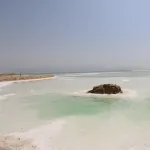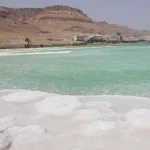Weather forecast for Dead Sea today
Weather in the Dead Sea District today. ℃ Average temperatures % Humidity, precipitation ️ Sunrise and sunset ️ Wind direction and speed, air pollution
Weather forecast at sea




🌡️ Climate Characteristics of the Dead Sea
The Dead Sea is located in one of the hottest and driest regions in Israel — the Jordan Rift Valley — at about 430 meters below sea level, making it the lowest point on Earth.
☀️ Extremely Hot Summers
The summer months (June to September) are especially hot, with temperatures ranging from 38°C to 45°C, and sometimes even higher.
Humidity is relatively low, but the intense solar radiation and dry air can make the heat feel stifling.
🌤️ Mild to Warm Winters
During winter (December to February), the weather is mild to warm, with average daytime temperatures around 20–23°C, and nighttime temperatures between 10–14°C.
Rainfall is very scarce — less than 50 mm per year.
💧 Low Humidity
Humidity levels are generally very low, which contributes to the dry desert climate.
As a result, sweat evaporates quickly, and people often don’t realize how dehydrated they are becoming.
🌬️ Hot Winds and Dust
Occasionally, especially in spring and autumn, hot dry winds known as “sharav” or dust storms sweep the area.
There can be sharp temperature drops between day and night, making the region climatically unstable.
🧂 Unique Atmospheric Conditions
The high UV radiation (due to low elevation and clean air) can actually benefit people with skin and respiratory conditions.
The air is rich in minerals and contains higher-than-average oxygen levels, contributing to the Dead Sea’s reputation as a natural therapeutic destination.
🔍 Summary
The Dead Sea has an extreme desert climate: hot, dry, and very little rainfall, with noticeable temperature differences between day and night. It’s an ideal destination for winter vacations, wellness retreats, and therapeutic stays — but visitors should stay hydrated and protect themselves from the sun.
Fun Fact: Because of its unique location and air pressure, sunburn risk is lower than at sea level — but UV exposure is still strong, so sunscreen is essential.